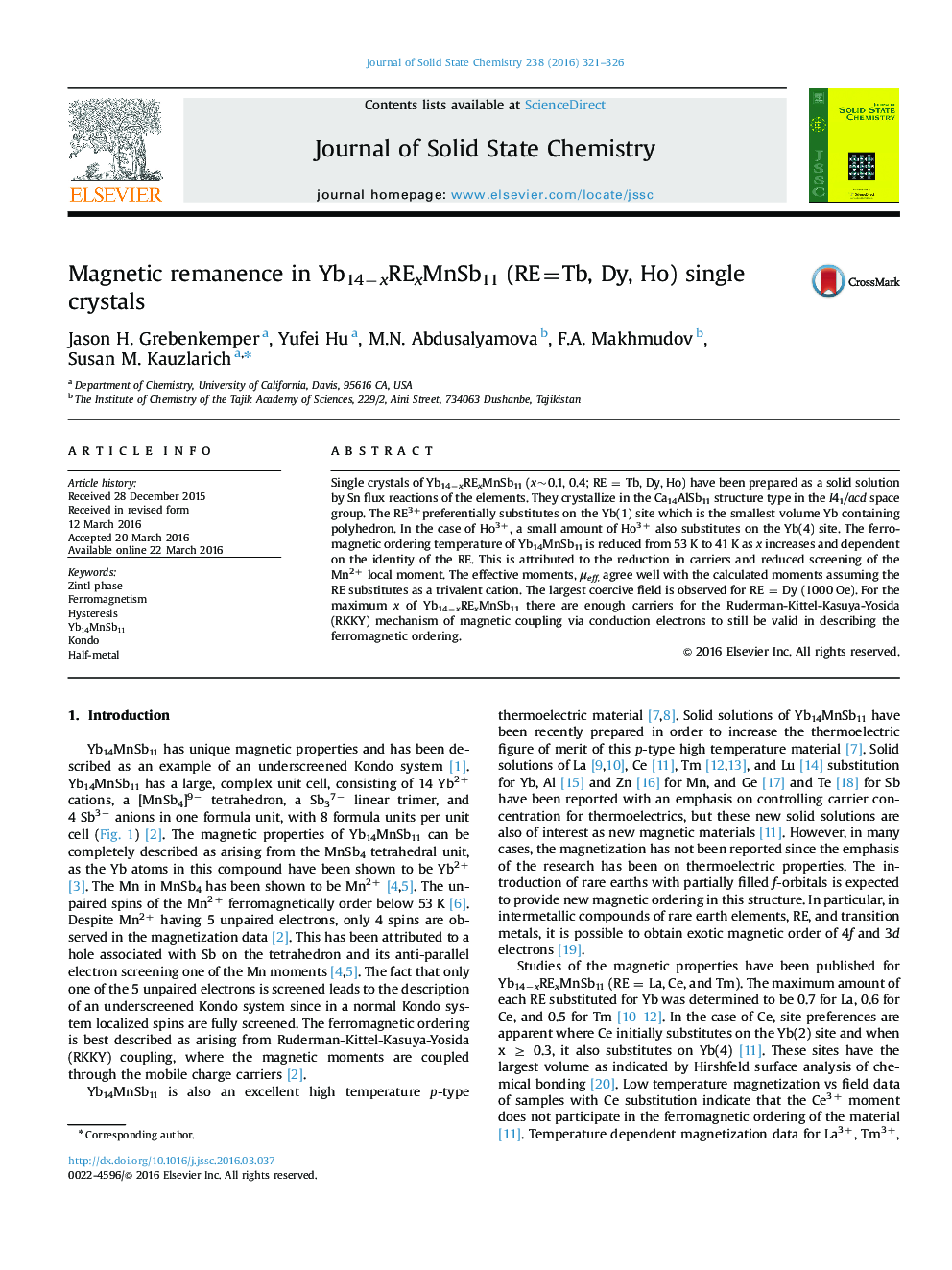| Article ID | Journal | Published Year | Pages | File Type |
|---|---|---|---|---|
| 1328885 | Journal of Solid State Chemistry | 2016 | 6 Pages |
•Yb14−xRExMnSb11 (RE=Tb, Dy, & Ho) were synthesized with x~0.2 and x~0.4.•Tb, Dy, & Ho preferentially substitute on the Yb(1) site.•Samples with the largest x and largest RE moment have the largest coercive field.•There is a split between zero field cooled and field cooled susceptibility.
Single crystals of Yb14−xRExMnSb11 (x~0.1, 0.4; RE = Tb, Dy, Ho) have been prepared as a solid solution by Sn flux reactions of the elements. They crystallize in the Ca14AlSb11 structure type in the I41/acd space group. The RE3+preferentially substitutes on the Yb(1) site which is the smallest volume Yb containing polyhedron. In the case of Ho3+, a small amount of Ho3+ also substitutes on the Yb(4) site. The ferromagnetic ordering temperature of Yb14MnSb11 is reduced from 53 K to 41 K as x increases and dependent on the identity of the RE. This is attributed to the reduction in carriers and reduced screening of the Mn2+ local moment. The effective moments, μeff, agree well with the calculated moments assuming the RE substitutes as a trivalent cation. The largest coercive field is observed for RE = Dy (1000 Oe). For the maximum x of Yb14−xRExMnSb11 there are enough carriers for the Ruderman-Kittel-Kasuya-Yosida (RKKY) mechanism of magnetic coupling via conduction electrons to still be valid in describing the ferromagnetic ordering.
Graphical abstractField dependent susceptibility loops revealed magnetic remanence in these materials, which has not been previously observed in Yb14MnSb11 compounds. The coercive field increases with the strength of the paramagnetic moment for the substituting rare earth and the amount of the rare earth that is substituted.Figure optionsDownload full-size imageDownload as PowerPoint slide
